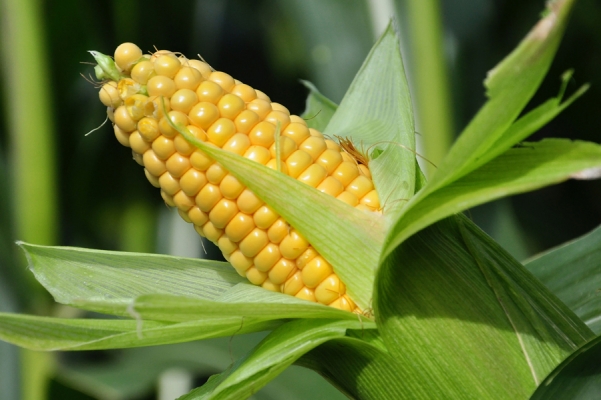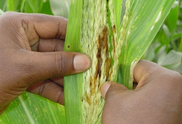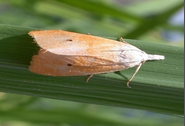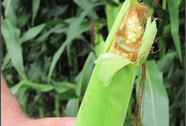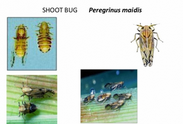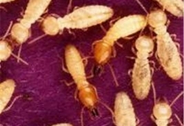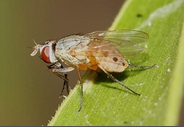Renuka (DKH-9705): Hybrid variety. It is high yielding variety which resistant to bacteria. It is a medium long height plant which has broad and deep green color leaves and long corns. It is resistant to leaf blight. The variety gets ready in 91-94 days and gives an average yield of 23-24qtl/acre.
Girija Compost(L-118): The variety is suitable for low and medium areas and high rainfall areas. It is timely maturing variety. It has medium height plant, thick stem, deep green color leaves and straight plant. The corns are orange in color which is hard in nature. The variety gets ready in 110 days and gives average yield of 16-17qtl/acre.
Sartaaj: It has medium long plant and deep green color leaves. It has thick stem and corns are medium in size which are hard in nature. It is resistant to bacterial disease and is normal resistant to leaf wilt. It is sown in Sirmour, Una, Bilaspur and Hamirpur regions and lower intermediate areas such as Kullu, Mandi, Solan, Chamba and Shimla. It gives an average yield of 19-20qtl/acre.
Early Compost: It is suitable for growing in areas located at the height of 750-1450m. It is medium ling and thick stem. Upper areas such as Kullu, Bilaspur, Mandi and dry areas such as Chamba, Kangra, Solan are suitable for sowing this variety. It has orange color grains which are hard in nature. The variety gets ready in 105-110 days and gives an average yield of 13.75qtl/acre.
Pavarti: The variety is suitable for sowing in low and intermediate areas. The variety is resistant to rot disease caused by bacteria. It has medium height plant. It has orangish-yellow color grains which are hard in nature. The variety gets mature in 110-115 days and gives an average yield of 14-15qtl/acre.
Navin Compost: It is early maturing having medium length, thick stem, yellow and hard grains. It is suitable for Maize-Toria-Wheat crop rotation. It gives an average yield of 14-15qtl/acre.
Him-123: The variety is suitable for sowing in lower areas and irrigated and fertile lands. It gives an average yield of 15-16qtl/acre.
Pop Corn: Approved by P.A.U. it is sold very costly. The variety gets ready in 100-105 days and gives an average yield of 8qtl/acre.
Apart from this below given Varnsankar varieties are referred to grow in different regions:
Kanchan-517: Kangra, Kullu, Solan and Sirmour regions in medium and high rainfall areas.
PSCL-3438: Low areas of Bilaspur, Una and Hamirpur regions where rainfall is less.
PSCL-4640: Kullu, Solan, Shimla and Chamba regions which are located in more than 1200m height in intermediate areas.
Kanchan-101: Downhill of lower hilly areas and intermediate areas.
Him-95: Hybrid variety which is medium maturing variety. It gives an average yield of 28.75qtl/acre.
9572-A: It is moderately resistant to leaf and sheath blight. It gives an average yield of 30.1qtl/acre.
Other state varieties:
Hybrid Ganga Safed 2: White seed variety. It has 170-200cm of plant length. The variety gets mature in 115-120 days and gives an average yield of 18-20 qtl/acre. The seeds contain 10% of protein content.
Hybrid Ganga 5: Yellow seed variety. It has 170-180cm of plant length. The variety gets mature in 100-115 days and gives an average yield of 16-18qtl/acre. The seeds contain 10-11% of protein content.
Sankul Ageti 76: Yellow seed variety. It has 150-185cm of plant length. The variety gets mature in 85-95 days and gives an average yield of 12-15qtl/acre. It is mainly cultivated in rainfed areas.
Sankul Navjot (J-684): It is an early maturing yellow seed variety. The variety gets mature in 85 days and gives an average yield of 12-15 qtl/acre. It gives good yield if cultivated in rainfed areas.
PEHM-2: Hybrid maize variety which is an early maturing variety. The variety gets mature in 80-90 days and gives an average yield of 18-19qtl/acre. Yellow seed variety (22gm weight/ 100 seeds).
Pratap Hybrid Maize 1: It is an early maturing variety which gets mature in 80-85 days. White seeded variety (23-24 gm weight/ 100 seeds). It gives an average yield of 12-14 qtl/acre.
Pratap Maize 3: The variety gets mature in 80-85 days and gives an average yield of 10-11 qtl/acre. White seed variety having 22-23gm weight/100 seeds. This variety has been found suitable for low rainfall areas.
Pratap Maize 5: It is a medium maturing variety which matures in 90-95 days. It gives an average yield of 14-16 qtl/acre. White seed variety having 25gm weight/ 100 seeds.
Pratap QPM hybrid 1: It is a medium height variety (195-230cm) which gets mature in 85-90 days and gives an average yield of 24-25 qtl/acre. High quality protein (8.87%), lysine (2.50%) and tryptophan (0.66%) is found in its seeds.
PMH 1: Applicable for cultivation throughout the state, under irrigated conditions for kharif/spring and summer season. It is long duration varieties, matures in 95 days. Stem is sturdy and of purple color. Average yield is about 21qtl/acre.
Prabhat: Long duration variety. Cultivated throughout the state under irrigated conditions kharif, spring and summer season. It is medium tall plant with medium thick stem and resistant to lodging. Matures in 95 days. Average yield is 17.5 qtl/acre.
Kesri: Medium duration variety, matures in 85 days. Grains are of orange color. Gives average yield of 16 qtl/acre.
PMH-2: Short duration variety, mature in 83 days. Cultivated under rainfed as well as under irrigated conditions. This hybrid is tolerant to drought. Ears are medium long with orange flint grains. Average yield is about 16.5 qtl/acre.
JH 3459: Short duration variety, mature in 84 days. It is tolerant to drought and lodging. It has orange flint grains with average yield of 17.5 qtl/acre.
Prakash: It is drought tolerant early maturing (82 days) hybrid. It gives average yield of 15-17 qtl/acre.
Megha: Short duration variety, mature in 82 days. It has yellow- orange flint grains. It gives average yield of 12 qtl/acre.
Pratap Makka Chari 6: Developed by MPUA&T, Udaipur. It is a medium tall variety; stem is strong, medium thick and resists lodging. It matures in 90–95 days. Its green fodder yield potential is 187–200 qtl/acre.
PEEHM 5: Pusa extra early hybrid Makka. It is tolerant to high temperature. Suitable for sowing in Punjab, Haryana, Delhi and Uttar Pradesh. Gives average yield of 20 qtl/acre.
HQPM-1 Hybrid: Developed by Haryana Agricultural University. Gives an average yield of 25 qtl/acre. It is resistant to major diseases like Maydis leaf blight (MLB) and Turcicum leaf blight (TLB).

